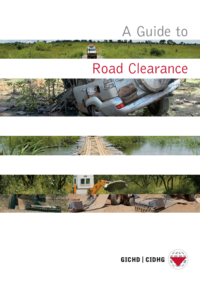Clearing roads prior to the deployment of peacekeeping units, or in support of humanitarian, reconstruction or development work, is a prerequisite to a safe and successful operation. However, road clearance is expensive and time-consuming. Equipment costs are high, especially in remote areas such as in Afghanistan, Angola and Sudan, where many roads remain contaminated by mines.
Confronted by these challenges, mine action operators are working to develop safer, more efficient and cost-effective road clearance systems. This Guide contributes to that process by providing recent examples, data and methodologies from the field. Methodologies and approaches used as examples in this guide were observed during field visits during 2006 and 2007. These should be considered to be snapshots: some procedures and equipment may have changed since then.
For the purpose of the guide we have generalised various methods and examples. However, in the field every scenario is unique and should be carefully assessed and interpreted within its own particular context.
Along with the information presented in this Guide, the GICHD has gathered supplementary technical data through visits to road clearance projects in four countries. This has been compiled in reference documents that can be downloaded from this page. They are also included on a CD-ROM accompanying the printed publication.
Also available in French PDF 0.9MB
Category: Detection and clearance

